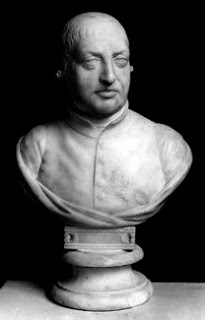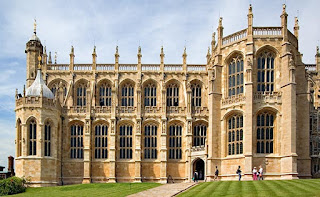This post may appear a bit backwards, since before we begin our series on the regency of George, Prince of Wales, in a few days, we will mark its ending! The Prince Regent, upon the death of his father, King George III on January 29, 1820, became George IV.
 |
| George III, 1809, NPG |
George III had been incapacitated for at least nine years. He was blind and deaf; sometimes he knew what was happening around him, other times he was far away in a world of his own. It has been widely accepted that he (and perhaps other members of the Hanoverian royal family) suffered from porphyria, a disease that combined symptoms of both physical and mental illness. The King did not know Queen Charlotte had died in 1818.
Since 1811, his eldest son, George, Prince of Wales, had ruled in his name.
 |
| George III by Allan Ramsay, 1762 National Gallery, UK |
George III (1738-1820) succeeded his grandfather, George II, in 1760. His father, Frederick, Prince of Wales, had died in 1751. Young and unmarried, George III soon took as a bride Princess Charlotte Sophia of Mecklenburg-Strelitz (1744-1818). They were wed in 1761 and had fifteen children.
Some of us Yanks know King George III as the man who “lost” the North American colonies.” He was the person to whom the Declaration of Independence was addressed. And it is said that the loss of the colonies bothered George III all of his life.
But instead of the tyrant he was assumed to be in the colonies, George III wanted a quiet country life for his family. He was dutiful and loyal. Some called him the Farmer King, for he loved to work on the land. His sons were well educated and given some independence but his daughters, the six Princesses, were forced to conform to the dictates of their father and their mother, Queen Charlotte.
 |
| Queen Charlotte by Sir Thomas Lawrence 1789 |
Of King George III’s fifteen children, twelve were still alive at his death. He had dozens of grandchildren, but almost all of them were illegitimate.
His first illness appeared with a vengenance in 1788 and 1789.
Many of us are familiar with the later years of George III’s life from the play and film The Madness of King George, which was relatively accurate in portraying the crisis. And though he recovered, the illness recurred during the rest of his life. Eventually, in 1811, he gave up power to his son, the Prince Regent, and lived for the rest of his life at Windsor Castle. He was 81 at his death. Frederick, Duke of York, said to be his favorite son, was with him when he died.
The whole British nation mourned the passing of this king, and tens of thousands came to Windsor to observe the funeral procession. George III is buried in St George’s Chapel within the castle walls.
In his excellent biography George III, (published in 1998 in Great Britain by Viking/Penquin and in the US by Basic Books), Christopher Hibbert quotes Mrs. Arbuthnot, close friend of the Duke of Wellington on the kings burial : “And thus has sunk into an honored grave the best man and the best king that ever adorned humanity….who for sixty long years had been a father to his people.”
Below, St. George’s Chapel, Windsor.



What a lovely and poignant review of the reign and sad end of George III. He sounds very much like his namesake played to such acclaim by Colin Firth. A man who didn't really want the job and did the best he could in spite of wanting to be somewhere else doing something else.
It is a shame his sons turned out to be such a ramshackle lot!